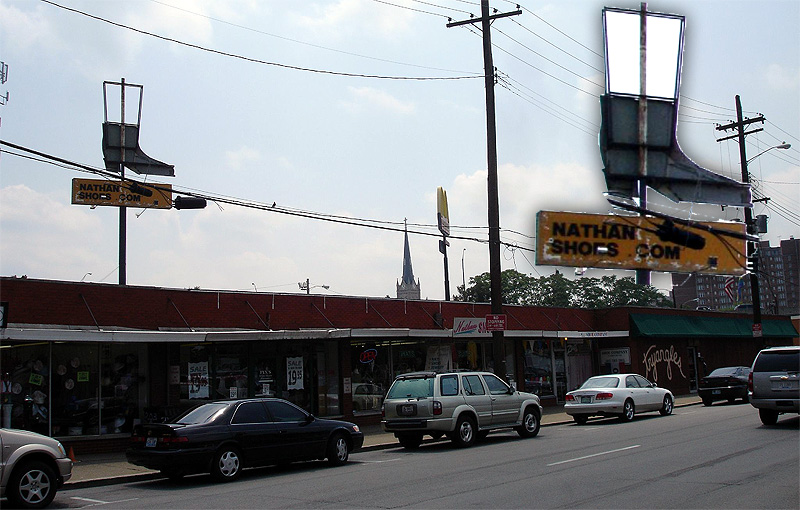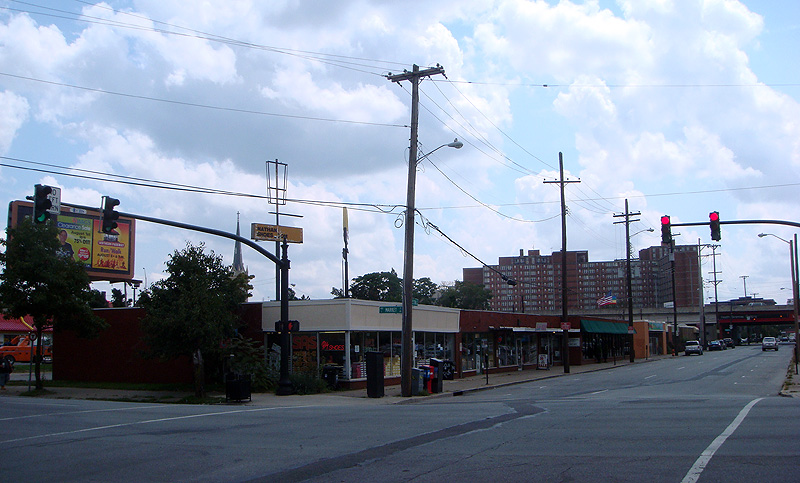As you should know by now, Jane Jacobs is one of my favorite urbanists, and her pivotal book, The Death and Life of Great American Cities, is a must read for any urban thinker (it’s long, you’ll just have to get through it). Jane lived in New York’s West Village neighborhood and largely became an urbanist by chance as she watched city life play out all around her. In Death and Life, she describes how cities work (or don’t) and what makes them thrive.
While her book deals predominantly with New York, Jacobs felt Louisville was worthy of mention, much to the credit of Grady Clay, a local writer, urbanist, and winner of the Athena Medal. Jacobs describes the importance of a diverse set of uses in a neighborhood or district. An area may have a “primary use” off of which other uses revolve, but diversity is key.
Jacobs describes how a variety of people should be able to interact while going about a variety of tasks at a variety of times, whether its going grocery shopping, stopping by a printing shop, moving about during the workday, or buying a pair of shoes. In short, it’s a classic recipe for vibrant street life.
Louisville once had a large and vibrant shoe market around what was once the Haymarket and what will eventually be the Nucleus campus. This was before Interstate 65 sliced through the area, obliterating much of what once existed. Here’s an excerpt from Death and Life of Great American Cities:
Primary uses can be unusual sometimes. In Louisville, since the war a great sample shoe market, for bargain, odd-lot shoes, has gradually grown up in about thirty stores concentrated on four blocks of one street. Grady Clay, a real estate editor of the Louisville Courier-Journal, and a leading city design and planning critic, reports that the group has about a half-million pairs of shoes on display and in warehouses. “This is in the inner gray area,” Mr Clay writes me, “but as soon as the word got around, customers began flocking in from all over, so that you see Indianapolis, Nashville, Cincinnati shoppers, plus a good Cadillac trade. I have been thinking a bit about it. Nobody could have planned this growth. Nobody has encouraged it. The biggest threat, in fact, is the expressway which will cut diagonally across. Nobody at City Hall seems at all concerned about it. I hope to stir up some interest…
The last remnants of this vast “shoe district” can still be seen on the corner of Market and Preston Streets (see photos), but imagine 30 stores and 500,000 shoes! Does anyone remember the area when it was organically flourishing as described by Jacobs and Clay? It seems Louisville has been weird for much longer than we thought.
- Local Urbanist Grady Clay Receives Athena Award (Broken Sidewalk)




As one of six kids, growing up in the pre-gentrified Cherokee Triangle of the 60’s and 70’s in what I know realize was a lower middle-class household – this is where we went to buy our shoes. This was after I-65 had already bisected the area, so it was already on the downswing I suspect. I never realized it was as extensive as you’ve just illustrated.
Great Post – thanks for the memories.
As I was born in 1960 – actually yesterday in 1960 – my experiences, like Mr. Kuhl’s are post-Interstate 65. My grandmother shopped “the Shoe Market” or “down on Preston Street” on a regular basis, but especially when her family was in from Frankfort and other places. It was one of those unique places. I remember it extended all the way down that block where Triangles and Kremers is now. She was always talking about “the Shoe Market” because that’s where the new fashions arrived. Of course, across the street was the Haymarket where you bought fruits and vegetables and in December Christmas trees and wreathing. The truth is you could arrange to buy most anything on the Haymarket if you knew the right people. There were also outlets of some sort across Market Street. They appeared in one of your pics a few items back, opposite McDonald’s. There was something called “The Thrift Store” somewhere right in that same area. Like Kuhl, my family was lower middle class at best and The Thrift Store had piles and piles of jeans and t-shirts, the standard “uniform” for public school kids like me and my brother. I also remember we bought furniture on Market Street and somewhere over on East Broadway. We were down there about every other weekend – I later realized we went there on the Saturdays after my grandfather’s Friday paydays – when my grandmother would make her account payments.
As a kid, the Shoe Market never held any fascination for me. The Haymarket, on the other hand, was a really neat place.
“Going to Preston Street” still brings back memories of all those shoe shops when I was a kid (I was born in 45). In high school, a friend and I put out an ‘underground newspaper.’ We devoted one whole issue to impressionist commentary on the old Haymarket when we heard it was closing. I sure wish I had a copy of our writing. My family went to the market every Christmas to get our tree. My vision of it feels like a retro-future movie… Blade Runner – with rag fires in oil drums.
What excellent stories of Downtown through the years. Thanks for sharing the memories. That stretch of Market Street has changed pretty drastically through the years and looks like it will continue to change for the better for some time yet.
On occasion, my Mom would go to the shoe stores on Preston for her shoes because her peasant feet were male-large and that was where she could find feminine shoes to fit her, These are the type of past traditional businesses those blockhead “planners” trended to wipe out with their great plans. The Haymarket, too, was an area that connected with generations of both sides of my family. My Grandpa (and my Mom’s father) and my Great-Grandfather had hereditary stalls at the Haymarket and made a solid living from sales of assorted produce. While great cities elsewhere are preserving, renovating and promoting their public markets, this idiot town lurches forward to 1960 and demolishes theirs and replaces it with more parking lots and medical corporate office malls. Once this nation adopts national health insurance and wipes these crooks off the map, may they all go bankrupt and their buildings get wrecked and are replaced with a farmers market.